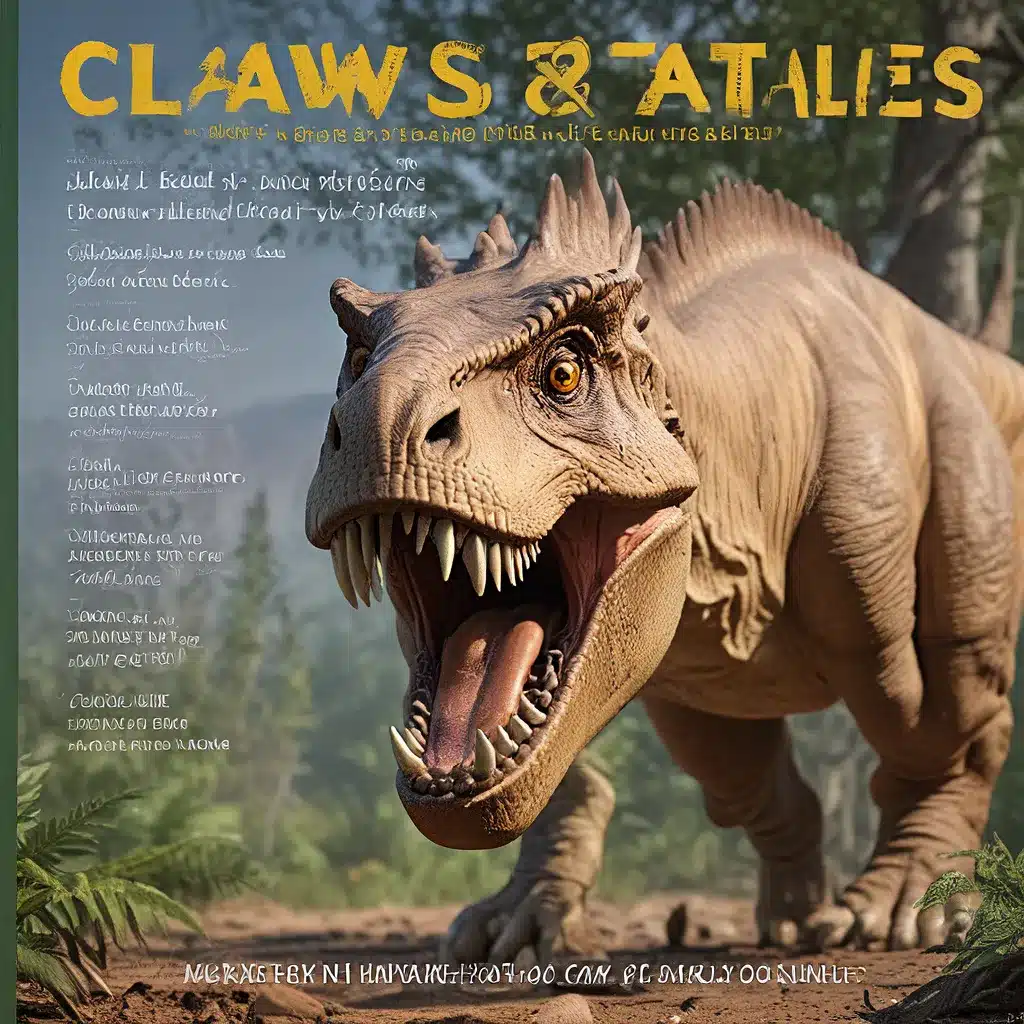
The First Dinosaur Discovery: Megalosaurus
Two hundred years after it was first named, scientists are just beginning to reveal the secrets of Megalosaurus, the earliest known dinosaur. In 1824, University of Oxford geologist William Buckland named this reptilian giant found in England’s Stonesfield quarry, marking a significant milestone in the nascent fields of geology and paleontology.
Buckland’s description of Megalosaurus was based on a collection of skeletal pieces, which he recognized as belonging to a massive, reptilian creature. At the time, the concept of extinction was still a relatively new idea, and the broader significance of these fossilized remains was only just beginning to be understood. Buckland envisioned Megalosaurus as a crocodile-like, amphibious animal, a far cry from the bipedal, carnivorous predator we now know it to be.
Over the years, as new dinosaur discoveries were made, particularly in North America, the image of Megalosaurus underwent numerous “makeovers.” In 1842, the English anatomist Richard Owen not only identified Megalosaurus as a dinosaur, but also refashioned its appearance, depicting it as a more mammal-like creature standing on all fours. This interpretation was further revised as more evidence emerged, leading to a consensus that Megalosaurus was a bipedal, bird-like predator.
Unraveling the Megalosaurus Puzzle
Despite its status as the first named dinosaur, the reconstruction of Megalosaurus has been a challenging task. As American Museum of Natural History paleontologist Roger Benson notes, some of the original Megalosaurus fossils illustrated in the scientific literature have gone missing, and their whereabouts are unknown. This, combined with the fact that Megalosaurus was named based on isolated skeletal elements, has led to a complex history of taxonomic attribution and varying interpretations over time.
In the early 21st century, Benson took on the arduous task of disentangling the “megalosaur mess,” as he calls it, as part of his doctoral project. By going back to the historic record and re-examining the available fossils, Benson was able to identify which remains truly belonged to Megalosaurus and which had been incorrectly attributed to the dinosaur.
Benson’s research revealed that some bones previously thought to be Megalosaurus actually belonged to other dinosaurs, such as the theropod Cruxicheiros and the new dinosaur Duriavenator. By carefully piecing together the verified Megalosaurus remains, Benson was able to provide a more accurate, modern description of the dinosaur’s skeleton.
Uncovering Megalosaurus’ Secrets
Despite the progress made in understanding Megalosaurus, many questions about this ancient creature remain unanswered. University of Oxford paleontologist Emma Nicholls notes that there is still a lot to learn about how Megalosaurus moved, how large it grew, and even how it reproduced.
One intriguing aspect of Megalosaurus is its potential connection to the specialized spinosaurs, a group of dinosaurs that are known to have been fish-eaters. Benson suggests that given Megalosaurus’ close relationship to spinosaurs and its discovery in coastal habitats, the dinosaur may have been a fish-eater as well, representing an important evolutionary step towards the more specialized spinosaurs.
The ongoing search for new Megalosaurus fossils is crucial to filling in the gaps in our understanding of this pioneering dinosaur. As Nicholls emphasizes, “If we were looking for a wish list of what I would like to know about Megalosaurus, then the answer would be everything.” This curiosity and drive to uncover the mysteries of the past continue to motivate paleontologists to keep exploring the ancient fossil record.
Dinosaur Behavior and Ecology
The study of dinosaur behavior and ecology has long been a fascination for both scientists and the general public. By examining the physical characteristics, environment, and potential habits of these long-extinct creatures, researchers can piece together a more comprehensive understanding of the prehistoric world.
One important aspect of dinosaur behavior is their locomotion. The transition from quadrupedal (four-legged) to bipedal (two-legged) movement was a significant evolutionary development, as it allowed for more efficient and versatile locomotion, particularly in predatory dinosaurs like Megalosaurus.
The Lost Kingdoms website explores in-depth the various modes of dinosaur locomotion, including the biomechanics and energetic advantages of bipedalism. By understanding how dinosaurs moved, researchers can gain insights into their hunting strategies, migration patterns, and overall ecological roles.
Another critical factor in dinosaur behavior and ecology is their dietary habits. Herbivorous dinosaurs, such as the massive sauropods, played a crucial role in shaping the ancient ecosystems, while carnivorous theropods like Megalosaurus were important predators that helped regulate the populations of other dinosaur species.
Researchers have employed a variety of techniques, including tooth and claw analysis, isotope studies, and microscopic wear patterns, to uncover the diets of different dinosaur species. These findings can shed light on the complex food webs and energy flows that characterized prehistoric environments.
The Enduring Fascination with Dinosaurs
The discovery and study of dinosaurs continue to captivate the public’s imagination, as well as the scientific community. The ongoing efforts to unravel the mysteries of these ancient creatures, such as the case of Megalosaurus, have revealed a rich tapestry of evolutionary adaptations, complex behaviors, and intricate ecological relationships.
As new fossils are unearthed and advanced techniques are applied to the study of dinosaur remains, our understanding of these remarkable creatures is constantly evolving. The insights gained from these endeavors not only deepen our knowledge of the prehistoric world but also inspire us to continue exploring the wonders of the natural world, both past and present.
The story of Megalosaurus and the broader quest to understand dinosaur behavior and ecology is a testament to the power of scientific inquiry, the importance of preserving and studying our natural heritage, and the enduring fascination with the lost worlds of the past.


